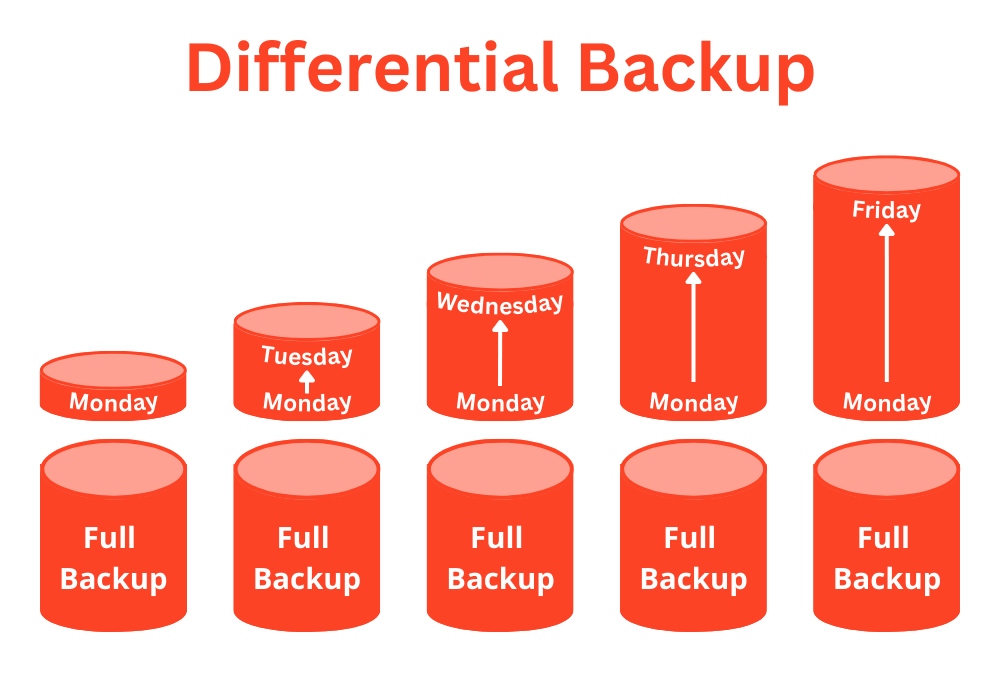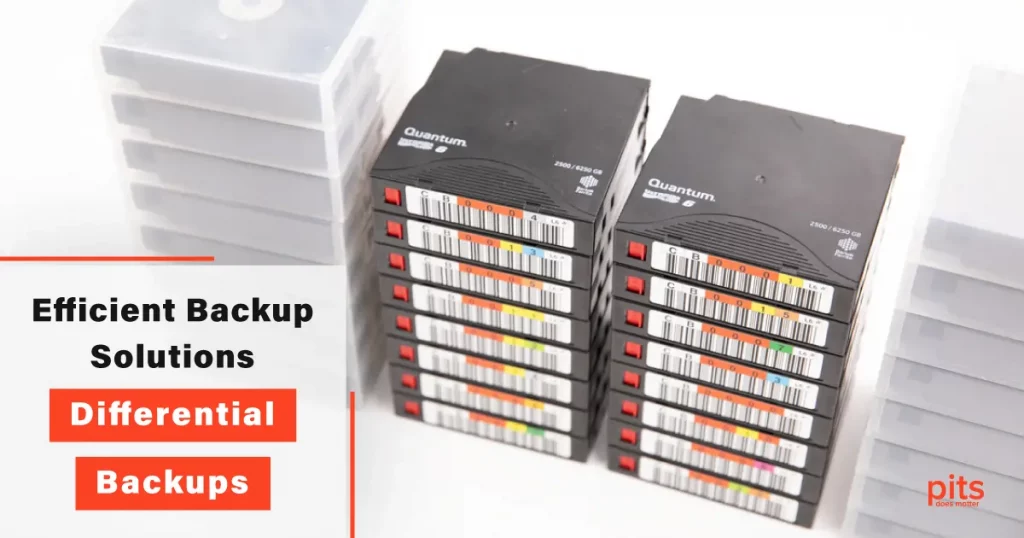In the digital age, where data is at the heart of every business and personal endeavor, safeguarding your information against loss or corruption is paramount. Various types of backups exist to cater to different needs, and among them, differential backups play a crucial role. In this blog post, we will delve into the concept of differential backups, how they differ from incremental backups, how they work, their advantages and disadvantages, and their significance in modern data protection strategies.
Differentiating Differential and Incremental Backups
Before we dive into the specifics of differential backups, let’s quickly differentiate them from incremental backups. Incremental backups involve copying only the changes that have occurred since the last backup. This approach is efficient in terms of time and storage space but requires the initial full backup to be available for restoration. Differential backups, on the other hand, capture all changes made since the last full backup, irrespective of whether previous differential backups have been taken.
Understanding How Differential Backups Work
Differential backups function by creating a copy of all changes made to the data since the last full backup. Unlike incremental backups, which rely on the previous backup (full or incremental), differential backups reference the initial full backup. Every subsequent differential backup accumulates changes, providing a snapshot of data modifications up to that point. This approach simplifies the restoration process, as you only need the full backup and the latest differential backup to restore your data.

Advantages of Differential Backups
Faster Recovery Times
When compared to incremental backups, differential backups generally lead to faster recovery times. Since you only need the full backup and the latest differential backup, the restoration process is quicker and more straightforward.
Simplicity
Differential backups offer a simpler restoration process compared to incremental backups, which require the previous backup chain to be reconstructed during recovery.
Less Backup Time
Creating differential backups typically takes less time than performing a full backup. This can be especially advantageous for large datasets.
Fewer Backup Files
The accumulation of changes in differential backups results in fewer overall backup files compared to incremental backups.
Disadvantages of Differential Backups
Storage Space
Over time, differential backups can consume more storage space than incremental backups. This is because each differential backup contains all changes since the last full backup, even if those changes have been included in previous differential backups.
Backup Speed
As time passes and the number of accumulated changes increases, the backup process might slow down, especially if the backup software does not efficiently handle the merging of changes.
Time-Consuming
While differential backups are generally faster than full backups, they can become time-consuming as the data size grows, particularly if the interval between full backups is long.
Incorporating Differential Backups into Your Strategy
To effectively incorporate differential backups into your data protection strategy, consider the following:
Frequency
Decide how often you will perform full backups and subsequent differential backups based on the criticality of your data and your recovery point objectives.
Storage Management
Monitor your storage space to prevent it from being exhausted by the accumulation of differential backups. Implement a retention policy to remove outdated backups.
Testing and Restoration
Regularly test your backup and restoration processes to ensure data integrity and your team’s familiarity with the recovery procedure.
Differential backups provide an essential layer of data protection, offering a balance between faster recovery times and a simplified restoration process. By understanding the nuances of differential backups, their benefits, and their limitations, you can make informed decisions about how to best integrate them into your broader backup and recovery strategy. Remember that a well-thought-out backup approach, encompassing full, incremental, and differential backups, ensures your data’s safety and your peace of mind in the face of potential data loss or corruption.
Frequently Asked Questions
What is a differential backup?
A differential backup is a type of data backup that captures all changes made to your files since the last full backup. It includes all modifications, regardless of whether they were already included in previous differential backups.
How does a differential backup differ from an incremental backup?
In a differential backup, all changes made since the last full backup are captured in each subsequent differential backup. In contrast, incremental backups only store changes since the last backup (whether full or incremental), resulting in a shorter backup chain but requiring the full backup for restoration.
Why would I choose differential backups?
Differential backups are chosen for their relatively faster recovery times and simpler restoration process. You only need the full backup and the latest differential backup to restore your data, making it easier and quicker to recover your information.
Are there any downsides to using differential backups?
Yes, there are a few downsides. Over time, the storage space required for differential backups can increase more than with incremental backups. Also, the backup process might become slower as the number of accumulated changes grows, potentially affecting backup speed.
How often should I perform differential backups?
The frequency of differential backups depends on your data’s criticality and your recovery point objectives. You might choose to perform them daily, weekly, or even less frequently based on your specific needs. Just ensure they align with your overall data protection strategy.
